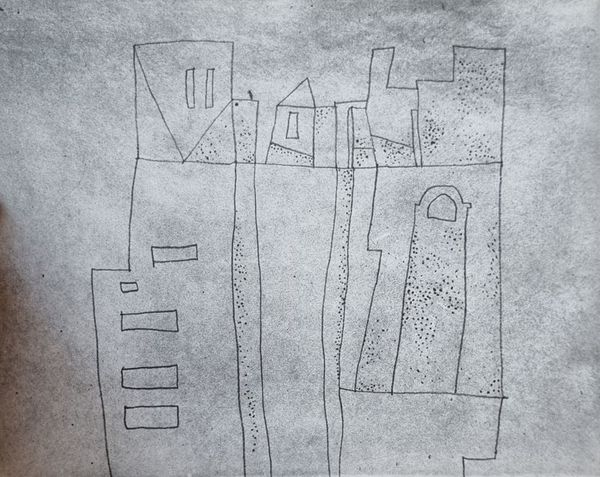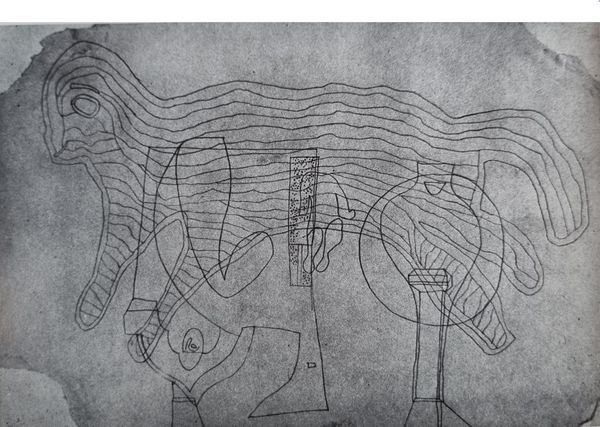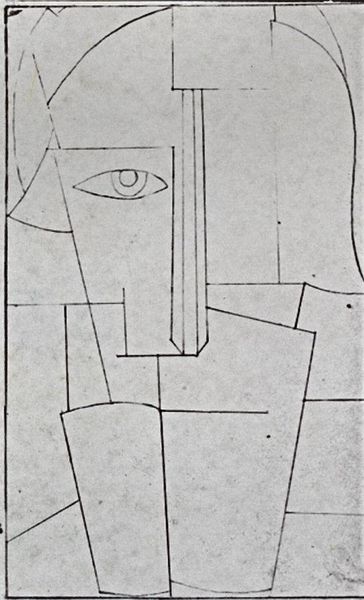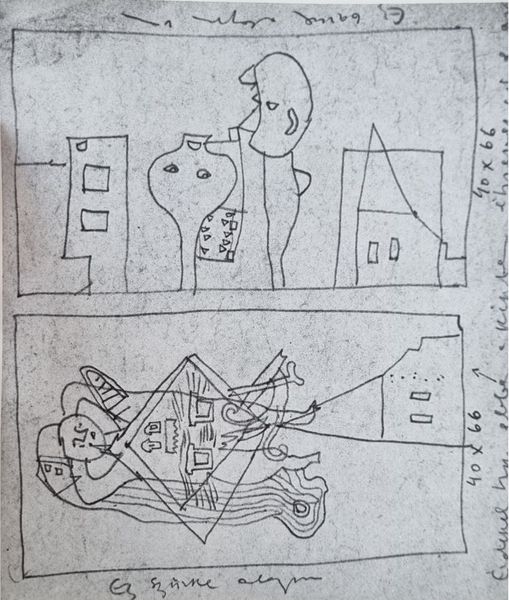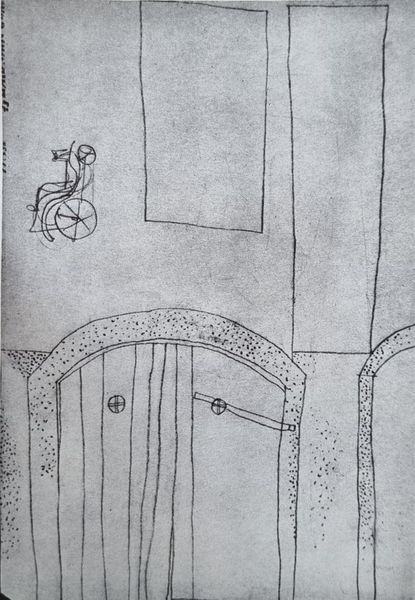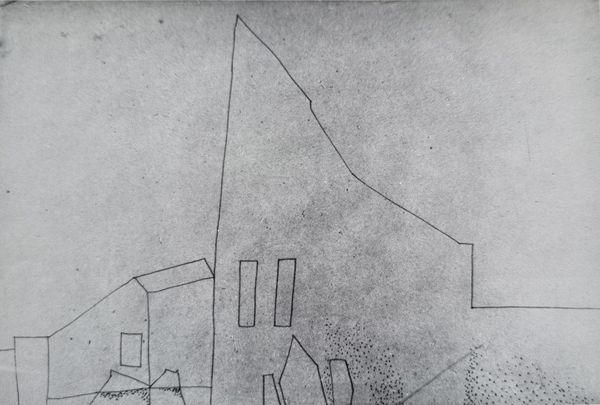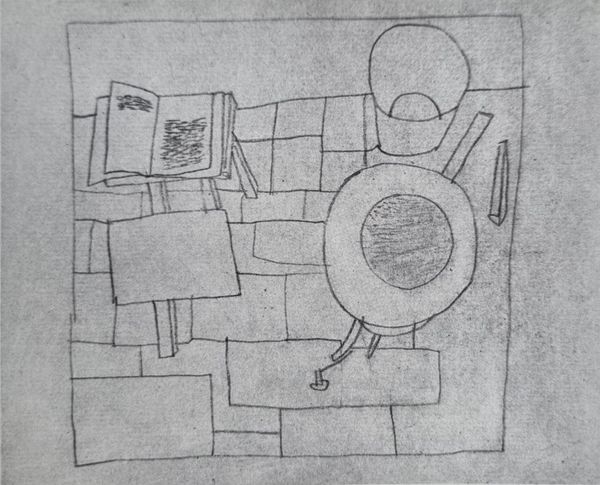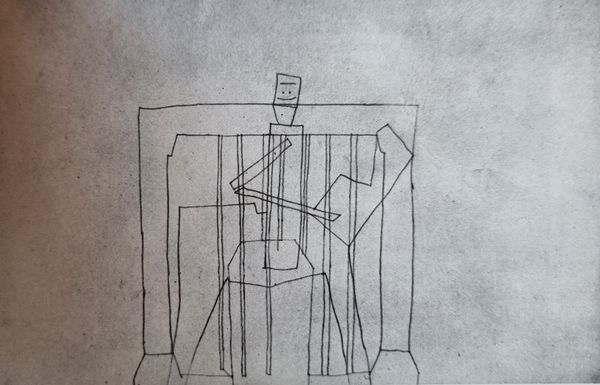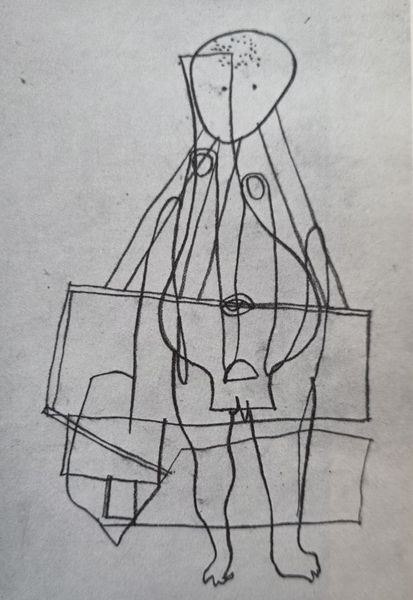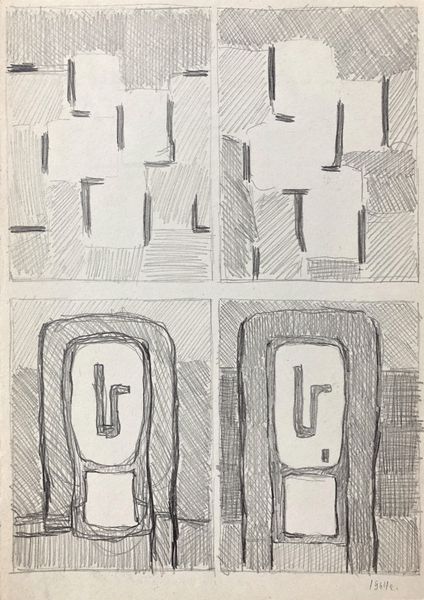
drawing, paper, ink
#
portrait
#
drawing
#
amateur sketch
#
thin stroke sketch
#
incomplete sketchy
#
hand drawn type
#
figuration
#
paper
#
personal sketchbook
#
ink
#
idea generation sketch
#
sketchwork
#
geometric
#
abstraction
#
line
#
sketchbook drawing
#
sketchbook art
#
initial sketch
Copyright: Public domain
Vajda Lajos created "Háromrészes Kép Madonnával" in 1937, using what appears to be ink on paper to produce this intricate drawing. The artwork is divided into three distinct panels, each containing a unique set of images. Notice how Lajos uses a delicate, linear style, creating a dreamlike composition through overlapping forms and semi-transparent layers. On the left, a strange construction stands like a scaffold, and in the center, the Madonna is depicted with a window placed as though within her face. The composition uses a semiotic system to evoke dreamlike elements, mixing the sacred and the profane. The layering effect obscures fixed meanings, and destabilizes established categories of sacred art. Consider how Lajos's use of line, shape, and division into three panels function not just aesthetically but also as part of a larger cultural and philosophical discourse. It suggests the breakdown of traditional artistic and social structures during a period of significant historical change.
Comments
No comments
Be the first to comment and join the conversation on the ultimate creative platform.

